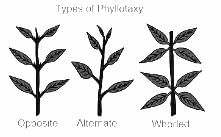NEET Exam > NEET Tests > Test: The Leaf (NCERT) - NEET MCQ
Test: The Leaf (NCERT) - NEET MCQ
Test Description
10 Questions MCQ Test - Test: The Leaf (NCERT)
Test: The Leaf (NCERT) for NEET 2024 is part of NEET preparation. The Test: The Leaf (NCERT) questions and answers have been prepared
according to the NEET exam syllabus.The Test: The Leaf (NCERT) MCQs are made for NEET 2024 Exam.
Find important definitions, questions, notes, meanings, examples, exercises, MCQs and online tests for Test: The Leaf (NCERT) below.
Solutions of Test: The Leaf (NCERT) questions in English are available as part of our course for NEET & Test: The Leaf (NCERT) solutions in
Hindi for NEET course.
Download more important topics, notes, lectures and mock test series for NEET Exam by signing up for free. Attempt Test: The Leaf (NCERT) | 10 questions in 10 minutes | Mock test for NEET preparation | Free important questions MCQ to study for NEET Exam | Download free PDF with solutions
Test: The Leaf (NCERT) - Question 1
Which of the following statements is/are false about the leaf?
a. The leaf develops at the node and bears a bud in its axil.
b. The leaf is the most important vegetative organ for photosynthesis.
c. Pulvinus provides rigidity to the leaf blade and acts as a channel for transporting water, minerals and food materials.
a. The leaf develops at the node and bears a bud in its axil.
b. The leaf is the most important vegetative organ for photosynthesis.
c. Pulvinus provides rigidity to the leaf blade and acts as a channel for transporting water, minerals and food materials.
Detailed Solution for Test: The Leaf (NCERT) - Question 1
Detailed Solution for Test: The Leaf (NCERT) - Question 2
| 1 Crore+ students have signed up on EduRev. Have you? Download the App |
Test: The Leaf (NCERT) - Question 3
In some _____, the leaf base may become swoolen and is called as _____.
Detailed Solution for Test: The Leaf (NCERT) - Question 3
Test: The Leaf (NCERT) - Question 4
In _____ phyllotaxy, a pair of leaves arise at each node and lie opposite to each other as in _____ plant.
Detailed Solution for Test: The Leaf (NCERT) - Question 4
Test: The Leaf (NCERT) - Question 5
Which among the following is incorrect about reticulate and parallel venation?
Detailed Solution for Test: The Leaf (NCERT) - Question 5
Test: The Leaf (NCERT) - Question 6
Study the given figures and identify the kind of phyllotaxy.

Detailed Solution for Test: The Leaf (NCERT) - Question 6
Detailed Solution for Test: The Leaf (NCERT) - Question 7
Test: The Leaf (NCERT) - Question 8
When leaflets one joined together at a common point at the petiole the leaf is called?
Detailed Solution for Test: The Leaf (NCERT) - Question 8
Test: The Leaf (NCERT) - Question 9
Which of the following characteristics distinguishes a compound leaf from a simple leaf?
Detailed Solution for Test: The Leaf (NCERT) - Question 9
Test: The Leaf (NCERT) - Question 10
What is the key difference between pinnately compound leaves and palmately compound leaves?
Detailed Solution for Test: The Leaf (NCERT) - Question 10
Information about Test: The Leaf (NCERT) Page
In this test you can find the Exam questions for Test: The Leaf (NCERT) solved & explained in the simplest way possible.
Besides giving Questions and answers for Test: The Leaf (NCERT), EduRev gives you an ample number of Online tests for practice
Download as PDF



















